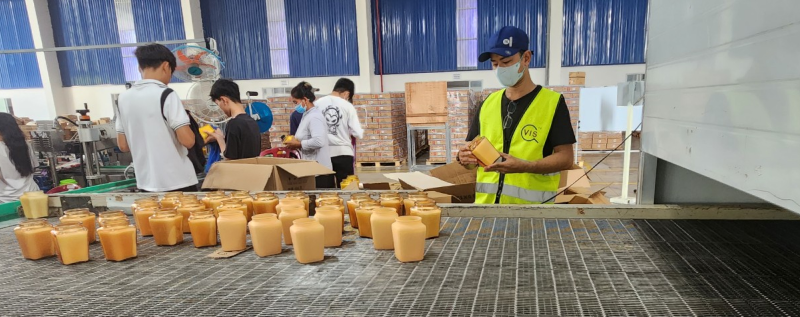In international trade, pre-shipment inspections are critical in ensuring that newly manufactured products adhere to their destination market’s quality and safety standards. In this article, we will explore the seven vital steps involved in a pre-shipment inspection process and the importance of this procedure for trade operators worldwide.
What is Pre-Shipment Inspection?
Pre-shipment inspection is a quality control measure that involves inspecting newly manufactured products before shipping them for export or import. The primary objective of pre-shipment inspections is to check the quantity and quality of the merchandise, identify any defects, ensure that products meet the safety requirements of the destination market, and issue reports for import and billing.
Why are pre-shipment inspections essential?
Pre-shipment inspections are necessary because they ensure that the goods being shipped meet the standards and specifications agreed upon by both the buyer and the seller. This helps to avoid any disputes between the parties involved and ensures that the goods reach their destination in the expected condition. Pre-shipment inspection also helps prevent fraud and other illegal activities, ensuring that the goods being shipped are accurately described and valued. Additionally, pre-shipment inspections help improve international trade standards by promoting fair trade practices and protecting all parties’ interests.
When will the pre-shipment inspection be conducted?
Pre-shipment inspections are conducted when production is at least 80% complete, and it is the final opportunity to take corrective action before production is shipped. The inspection covers functionality, performance, durability, overall appearance, and dimensions.
A pre-shipment inspection aims to ensure that the products being shipped meet the quality standards specified by the buyer. Following a successful pre-shipment inspection, the agency issues an inspection report document accompanying the consignment to its destination.
What are the seven steps in a Pre-Shipment Inspection?
Let’s delve into the seven important steps involved in a pre-shipment inspection procedure:
1. Inspection Visit
Pre-shipment inspection begins with a visit to the factory or production house. A qualified inspector evaluates the products based on specified criteria, checking functionality, performance, durability, appearance, and dimensions. Defects or non-conformities warrant corrective actions, re-inspection, or rejection of the products.
2. Quantity Verification
The second step of pre-shipment inspection is to verify the quantity of the products. The inspector counts the shipping cartons and compares the quantity with the ordered quantity. The inspector also checks the packaging of the products to ensure that the correct packing materials are used to protect the products from damage, loss, or theft during transportation. He will also verify the packaging labels to ensure they contain the correct and accurate information, such as the product name, description, quantity, weight, origin, destination, and barcode.
3. Random Selection
One of the essential steps of pre-shipment inspection is randomly selecting a sample of products for inspection. To ensure a standardized process, the inspector uses an internationally recognized statistical sampling procedure, such as the ANSI/ASQC Z1.4 (ISO 2859-1) standard.
The inspector selects a fair and unbiased sample of products based on the lot size, the inspection level, and the acceptable quality level (AQL). The inspector ensures that the sample is randomly selected and that no external factors, such as the appearance or location of the products, influence the selection.
4. Cosmetic and Workmanship Check
During the pre-shipment inspection process, the fourth step involves examining the cosmetic and workmanship quality of the products. The inspector selects products from a random sample and inspects them for any visible defects such as scratches, dents, cracks, stains, tears, or missing parts. The workmanship quality of the products is also evaluated by checking the stitching, sewing, gluing, or welding. The products are compared with approved samples, specifications, or standards to ensure that they meet the quality requirements. Suppose the inspector discovers any cosmetic or workmanship defects. In that case, they will classify them as critical, major, or minor based on the defects’ severity and impact on the product quality and safety.
5. Conformity Verification
The fifth step of pre-shipment inspection is to check if the products meet the technical specifications, performance criteria, and regulatory requirements. This is done by measuring, testing, or analyzing the products using various tools and instruments. The inspector also verifies the product dimensions, material and construction, weight, color, marking, and labeling. Additionally, the inspector ensures that the products have the necessary certificates or approvals. If there are any issues, the inspector may request improvement, replacement, or removal of the products.
6. Function and Safety Test
The sixth step of pre-shipment inspection involves testing the function and safety of the products. During this step, the inspector conducts physical tests on the products to assess their functionality, performance, durability, and reliability. Additionally, the inspector performs safety tests on the products to ensure they don’t pose any risks or hazards to the users or the environment.
To test the products, the inspector employs various methods and equipment, such as pull, fatigue, stretch, fabric density, and composition tests, or flammability and toxicity tests. The inspector strictly follows each product’s testing procedures and standards, such as the ASTM, ISO, or EN standards.
7. Final Report
The final step of pre-shipment inspection is issuing a detailed report. This report includes product quantity, quality, compliance with specifications and standards, recommendations and actions taken, and supporting documents and certificates. It provides objective evidence of the inspection and supports decision-making and negotiation between buyers and suppliers while fulfilling contractual and regulatory obligations.
Conclusion: What are 7 steps of Pre-Shipment Inspection?
In conclusion, pre-shipment inspection plays a vital role in ensuring the quality and quantity of products before they are shipped to the buyers. By conducting pre-shipment inspections, businesses can avoid potential problems or disputes and improve the quality of their products and services. If you need professional preshipment inspection service, contact our professional today!



Related Posts